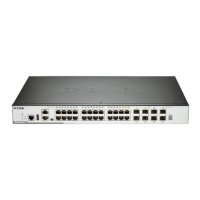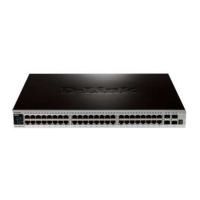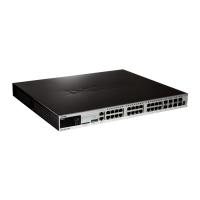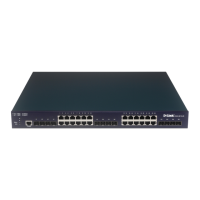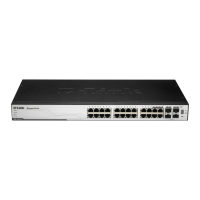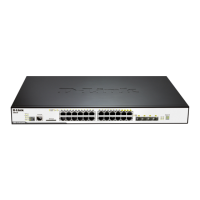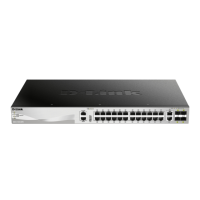DGS-3630 Series Layer 3 Stackable Managed Switch Hardware Installation Guide
37
Switch Stacking
The DGS-3630 series supports stacking up to 9 switches together while being managed through one console
connection on the master switch, or by an IP address through the MGMT port, or by multiple IP addresses through
any of the RJ45/SFP/SFP+ ports using Telnet, the Web UI, and SNMP. This cost-effective switch provides an
affordable solution for administrators to upgrade their networks using the combo RJ45/SFP+ ports to scale and stack
the Switches. This increases overall reliability, serviceability, and availability.
Duplex Chain – The Duplex Chain topology stacks switches together in a chain-link format. Using this
method, data transfer is only possible in one direction. If there is a break in the chain, then data transfer will
be affected.
Duplex Ring – The Duplex Ring stacks switches in a ring or circle format where data can be transferred in
two directions. This topology is very resilient due to the fact that, if there is a break in the ring, data can still be
transferred through the stacking cables between switches in the stack using the alternate path.
Switches in the series can be physically stacked using optical fiber cables connected to SFP+ transceivers, or Direct
Attached Cables (DAC) with SFP+ connectors. Only the last 4 ports on the Switch can be used for physical stacking.
Physical stacking needs to be enabled and can be configured to support either a 2-port or a 4-port stacking
configuration. When the 2-port stacking configuration is used, a full-duplex speed of up to 40Gbps will be used
between two switches. When the 4-port stacking configuration is used, a full-duplex speed of up to 80Gbps will be
used between two switches.
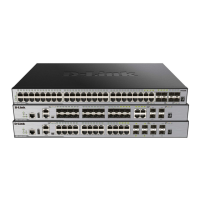
